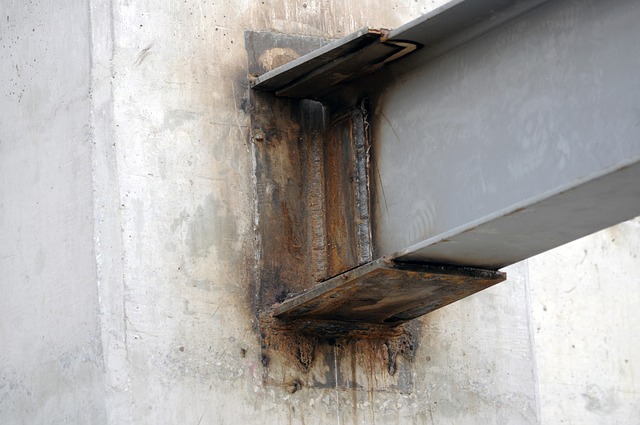Glue Laminated Beams (GLBs) and Engineered Wood Beams (EWBs) offer distinct structural benefits for construction. GLBs use glue to bond lumber layers for enhanced strength, while EWBs combine wood strands or veneers for exceptional strength, stiffness, and stability. Understanding these differences is vital for informed decisions based on performance, sustainability, and budget. Researching and comparing beam types can lead to cost savings and better project outcomes.
In today’s construction landscape, understanding cost-saving opportunities is paramount. One such area of focus is negotiating better deals on glue laminated beams (GLB) versus engineered wood beams (EWB). This article provides an in-depth guide to help contractors and builders navigate the market effectively. By exploring key cost factors, mastering negotiation strategies, leveraging market trends, and ensuring post-negotiation follow-up, you can achieve significant savings without compromising quality. Discover how choosing the right beam type can lead to substantial long-term cost benefits.
- Understanding Glue Laminated Beams vs. Engineered Wood Beams
- Key Cost Factors in Beam Manufacturing and Procurement
- Strategies for Effective Negotiation: Pre-Planning Essentials
- Leveraging Market Trends to Secure Better Deals
- Post-Negotiation Follow-Up: Ensuring Long-Term Cost Savings
Understanding Glue Laminated Beams vs. Engineered Wood Beams

Glue Laminated Beams vs. Engineered Wood Beams: Understanding the Key Differences
In the world of construction, both Glue Laminated Beams (GLB) and Engineered Wood Beams (EWB) are structural elements gaining popularity due to their unique properties and benefits. However, GLBs and EWBs differ significantly in terms of manufacturing processes, material composition, and performance characteristics. Let’s delve into a structural comparison to understand these differences better.
Glue Laminated Beams vs Engineered Wood: A Structural Comparison
GLBs are created by laminating multiple layers of lumber with high-quality glues, resulting in a strong and rigid beam. This process enhances the natural strength of wood, making GLBs superior in terms of load-bearing capacity and structural integrity. On the other hand, EWBs are engineered using advanced manufacturing techniques, combining selected wood strands or veneers with adhesives to form a solid composite material. This innovative design offers exceptional strength, stiffness, and dimensional stability compared to traditional lumber choices. When considering cost-saving measures, such as negotiating better deals on these beams, understanding these differences becomes crucial for making informed decisions that balance structural performance, sustainability, and budget constraints. To explore more about the advantages and applications of each beam type, visit us at unalam.com anytime.
Key Cost Factors in Beam Manufacturing and Procurement

In the world of structural components, Glue Laminated Beams (GLB) and Engineered Wood Beams (EWB) stand out as modern alternatives to traditional lumber choices. When considering cost-saving strategies for construction projects, understanding the key cost factors in beam manufacturing and procurement is essential. One significant distinction between GLBs and EWBs lies in their structural composition and production methods. Glue Laminated Beams are created by bonding multiple layers of wood together with strong adhesives, forming a robust and uniform structure. This process, known for its precision and quality control, enhances the strength and stiffness of the beam while minimizing waste compared to traditional solid lumber cutting.
On the other hand, Engineered Wood Beams encompass various composite wood products designed to meet specific structural requirements. They can be made from different types of wood veneers, strands, or chips bonded together with resins or adhesives. EWBs offer numerous benefits, such as improved strength-to-weight ratio, superior dimensional stability, and resistance to moisture and pests. When comparing GLBs vs. EWBs in terms of cost, the latter often presents a more economical option due to their efficient production methods and versatility. However, the decision between these two structural solutions should consider factors like project specifications, load requirements, and long-term sustainability goals. Visiting us at 18 Clifton St, Unadilla, NY 13849 anytime can provide you with expert insights tailored to your specific beam needs.
Strategies for Effective Negotiation: Pre-Planning Essentials

Effective negotiation strategies are essential when seeking better deals on glue laminated beams, especially when comparing them to their engineered wood counterparts. Before diving into negotiations, it’s crucial to understand the structural differences and benefits between these two beam types. A glue laminated beam is created by bonding multiple layers of wood together with strong adhesives, resulting in a robust and versatile structure. In contrast, engineered wood beams, also known as composite wood products, are designed to mimic traditional solid lumber but offer enhanced strength and stability.
Pre-planning involves researching the market, understanding your project’s specific needs, and recognizing the unique advantages of each beam type. For instance, glue laminated beams excel in load-bearing capacity and can be customized for various architectural designs. Meanwhile, engineered wood beams provide benefits such as consistent dimensions, reduced weight, and superior resistance to moisture and pests. By comparing these aspects, you’ll gain leverage during negotiations, allowing you to secure better prices or additional features that cater to your project’s unique requirements. Visit us at 18 Clifton St, Unadilla, NY 13849 anytime for expert guidance on making informed decisions regarding structural components.
Leveraging Market Trends to Secure Better Deals

In today’s competitive construction market, understanding glue laminated beams vs. engineered wood beams can provide significant cost savings and structural advantages. By leveraging market trends and staying informed about advancements in timber lamination, builders and contractors can negotiate better deals on high-quality materials. For instance, a thorough comparison of glue laminated beams versus engineered wood beams reveals distinct benefits, such as enhanced strength and durability, particularly with glue laminating techniques.
This method, which involves bonding multiple layers of timber together under pressure, offers significant advantages over traditional wooden joists or solid lumber. For example, engineered wood beams, often made from sustainable resources, can support heavy loads, are versatile in architectural designs, and have a longer lifespan than their unlaminated counterparts. To make an informed decision, consider visiting us at 18 Clifton St, Unadilla, NY 13849 anytime to explore the latest innovations and secure the best deals on these advanced building solutions.
Post-Negotiation Follow-Up: Ensuring Long-Term Cost Savings

After securing a favorable negotiation for glue laminated beams, the next crucial step is post-negotiation follow-up to ensure long-term cost savings. This involves several key actions. First, thoroughly review the agreement and confirm all terms and conditions are met. Then, conduct a structural comparison between glue laminated beams and their traditional counterpart, engineered wood beams, to highlight any significant advantages secured during negotiation. This analysis should consider factors like strength, durability, and cost-effectiveness over the lifespan of the structure.
Additionally, it’s essential to maintain open lines of communication with the supplier or manufacturer. Regularly check in to discuss any emerging trends, innovations, or advancements in glue technology that could further optimize beam construction. By staying informed about these developments, you can make informed decisions and potentially renegotiate for even better deals in the future. Remember, giving us a call at (607) 369-9341 can provide expert insights tailored to your specific needs, ensuring you stay ahead of the curve in beam selection and cost-saving measures.
When negotiating deals on glue laminated beams, understanding the market dynamics between these construction materials and their alternatives, like engineered wood beams, is key. By identifying cost-saving opportunities in beam manufacturing and procurement, and employing effective negotiation strategies, businesses can secure better deals. Leveraging market trends allows for proactive cost management, while post-negotiation follow-up ensures long-term savings. This comprehensive approach to purchasing glue laminated beams can significantly impact a project’s bottom line, making it a crucial step in any construction or renovation process.














